Melbourne Australia, 19 – 21 March 2010.
To celebrate the 21st anniversary of the Phillip Island Classic, the Victorian Historic Racing Register fittingly chose Alfa Romeo as the featured marque for the event. Held annually at the sweeping 4.4 km circuit south of Melbourne, the international stature of this meeting is well established. Its reputation is such that the Alfa Romeo factory, in its centenary year, sent one of its irreplaceable Alfettas, chassis #159.111, engine #159.221.
Fangio drove this car to victory in the Swiss Grand Prix at Bremgarten in May, 1951 and to the first of his World Drivers’ Championships. It was only the second visit to the southern hemisphere by an Alfetta, the first being to the 500th Formula 1 Grand Prix in Adelaide in 1990.
It arrived to little fanfare late on Friday in a grey, closed transporter but as soon as it was rolled out it became the centre of attention in the pit lane garages. As lead car in the weekend demonstration laps, it understandably wasn’t extended due to the fact that it had duties to perform at the Australian Grand Prix the following week.
Older but with as significant a history was the ex-Nuvolari sole surviving first series P3, chassis #5006, of regular campaigner Peter Giddings. This car, dating from 1931, gets out much more often and is driven hard, as it should be. Oldest of all the Alfas on the island, the world’s only G1, chassis #6018, will be ninety next year.
Rescued in the sixties from a farm in western Queensland by Ross Flewell-Smith and now owned by Alfa Romeo Australia’s Neville Crichton, it circulated all weekend with David Berthon at the wheel.
From the UK in the hands of Andy Newall came Alfa Romeo T33/3 (Read more on T33) chassis #19. An Autodelta car, it was raced by Andrea de Adamich and Gijs van Lennep from 1971, coming second to Vacarella’s similar car in that year’s Targa Florio. After Autodelta, it remained in its original state and was sold on in the 1980’s. Overall winner in the 2003 Le Mans Classic and recommissioned last year, it continues to enjoy success in the World Sportscar Masters Series.
Slightly more gentle laps were the order of the day for Phips Rinaldo in ‘Roma’. New Zealand is about as far away as you can get from the largest state in the union, but that is from where ex-pat Alaskans, the Rinaldos, had brought their 1934 6C 2300 GT short chassis Berlina, #700250, to share in the celebrations. Its first owner was Barone Beneventino in Rome and it spent several years in that city with Italian collector Ferdinando Venturi. Although its whereabouts during the war are unknown, prior to its journey to New Zealand it had spent 30 years in Biella, not far from its birthplace at Il Portello.
Its beautifully patinated Aerodynamica pillarless four-door body is by Touring of Milan. One of 473 built, it has the earlier leaf springs, friction shocks and rod controlled brakes and radiator blind, unlike most of the post 1935 examples. The twin cam six puts out 76bhp at 4400rpm, top speed is 130kph and the trunkless superleggera body weighs in at 1250kg. Controls include a centre throttle, reversed 4 speed shift pattern, free-wheeling lever and rear shock adjustment wheel. In the back are raised seats and recessed shelves for the grappa glasses.
With over 500 cars entered, Friday was spent in practice and qualifying. In addition to the normal two Regularity divisions, the Alfa-only Regularity got underway on Saturday at 9am with fifteen minutes on the track for drivers to estimate their lap times. In these events, points are lost for anything above or below the nominated time. Most of the Alfas entered for races also took part, giving spectators the chance to see cars like the Type 33/3 and the P3 mix it with the G1 and ‘Roma’.
John Lawson stretched the long legs of his 1938 6C 2300B Spyder as did American Peter Greenfield with his 8C-35, built around 20 years ago by Paul Grist from UK sourced parts. The dual supercharged engine, gearbox, running gear and some other major parts are correct period Alfa items. Grist’s genuine 8C, chassis #50013, was used as the model for the bodywork. During the early part of the weekend its 330bhp proved a handful more than once on the track’s tight Turn 4. (Read history of 8C 35)
With Alfa Romeo being featured so were drivers of the cross and serpent. This year’s event patron was Kevin Bartlett, winner of the 1968 and 1969 Australian Driver’s Championships in Alfa powered Brabham and Mildren open wheelers. As Driving Standards and Competitor Liaison Officer each year he has his hands full off track, but managed to share time in a 1964 TZ1 from the UK with Gordon McCulloch and Andy Newall. Seventeenth of the approximately one hundred built, in its original shade of green, this road-spec car spent its first 20 years in South Africa. These days it is exercised in European and UK historic racing.
Andrew Cannon brought his Maserati 150S/250S from the US. One of 26, and sold new by Mille Miglia Motors of San Francisco to Mr Chick Leson, it won its debut race at Palm Springs in November 1956. Later fitted with a works 2.5 litre engine it is now extensively campaigned with success by Andrew. Ferrari 212 Export #0137EL came from New Zealand. Owned by Warren De France since 2003, it was bodied in 1951 by Ghia-Aigle. (Read history of 0137EL)
Guido Belgiorno-Nettis ran his well sorted Ferrari 156/85 Formula 1 turbos in their Alboreto and Johansson liveries all weekend. The three Panteras of Colin Fulton, Perry Spiridis and Ross Jackson traded track space in Group Sc. Ron Townley’s 1948 4.5 litre Talbot Lago contested Division 1 Regularity among the Bugattis of Alan Telfer (Type 37/35B), Rod Amos (Type 40) and Kent Patrick (Type 37A). George Hetrel (Type 35C) mixed it in Group J with Frank Cuttell’s 1929 Gipsy Fiat Special and John Hardy’s 1967 Alpine Renault A110 looked a treat under brakes in the downhill run into Turn 10 after Lukey Heights. (Read about the A110)
Across Gardner Straight, opposite the pits in the visitor centre, were several of the earliest Alfa Romeos seen on Australian roads in the 1920s. John Lawson’s 1929 6C 1750 SS Zagato is believed to be the world’s lowest mileage example of its type. Showing fewer than 9,000 kilometres on its speedometer it displays its original registration number. The 2nd Series RLN nearby, with engine number #7333, had been imported by Overseas Motors, Melbourne as a complete chassis in 1923 for the current owner’s grandfather at a cost of 890 Australian pounds. Fitted with a 7 seater tourer body by local coachbuilders Cheetham & Borwick for an additional 300 pounds, the car carried passengers and mail between Melbourne and Geelong. Believed to have covered more than half a million miles in its first fifteen years and been found under a tree in Surrey Hills after the war, it then spent time in Western Australia. Benefitting from a sympathetic restoration, it is one of the few Normale RL tourers remaining.
Dozens of Alfas of the 60s and 70s on track made it an Italian weekend to remember. A week earlier the circuit had hosted an all Alfa two-day race meeting combined with the annual national Alfa Romeo Owners Club ‘Alfesta’ and many had stayed on for the Classic.
Of the others, the best looking non Italian or French car had to be the ex-Rod Carvath Aston Martin DB3S #11 which had competed in Australia fifty years ago in the hands of the Californian racer. The loudest were the 30+ five litre Formula 5000s and the longest runs on three wheels went to the two Hillman Imps. The real winner, however, was anyone who was there. Their smile probably has still not worn off.
Also seen at Phillip Island—
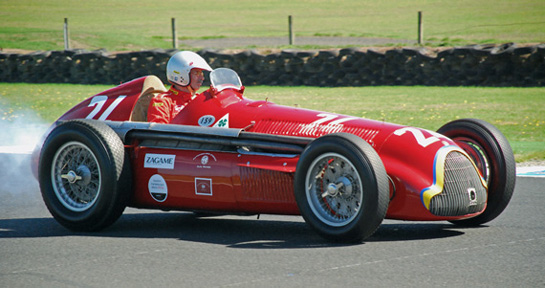
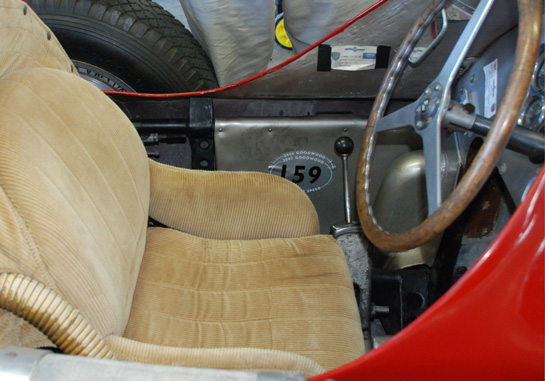
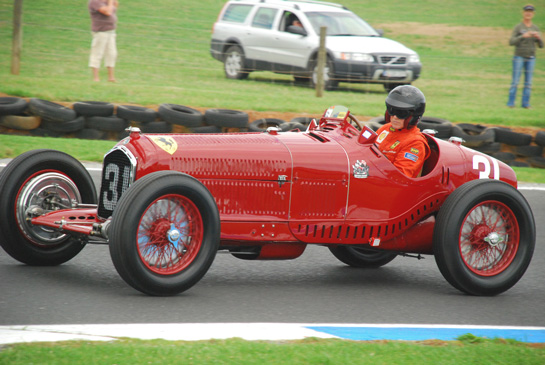
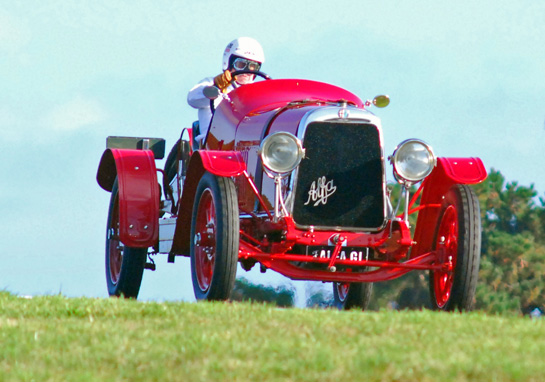
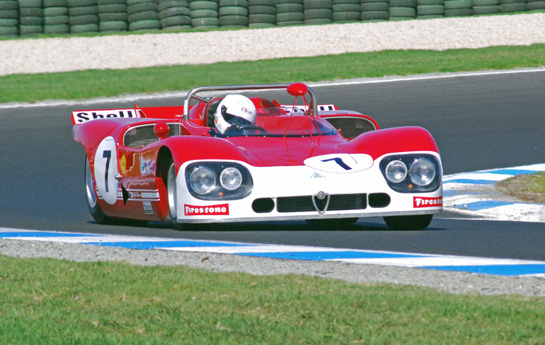
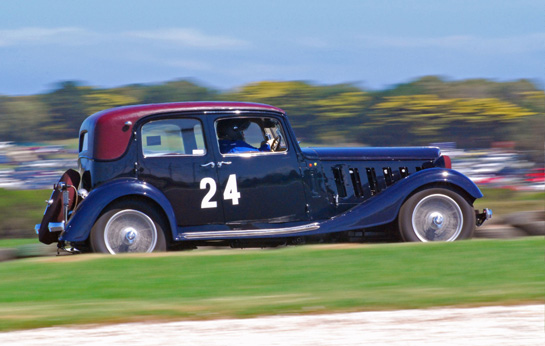
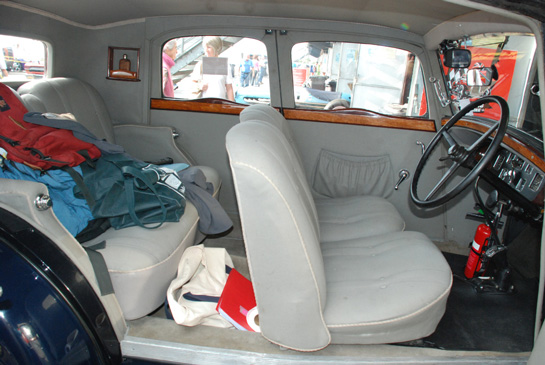
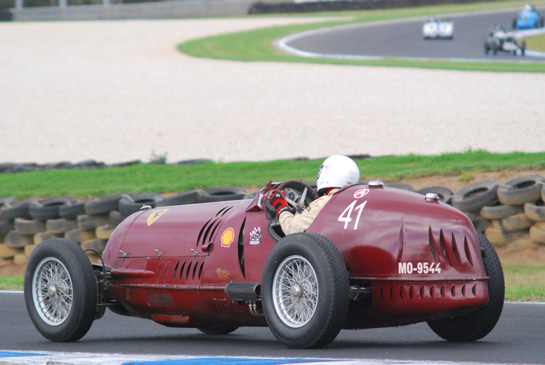
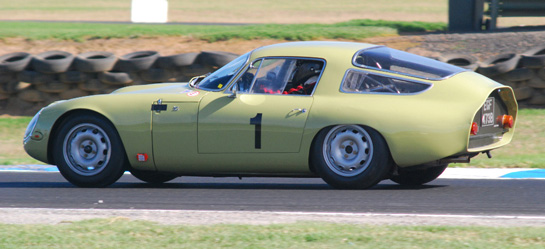
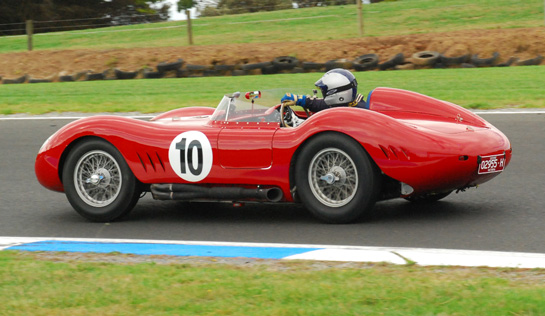
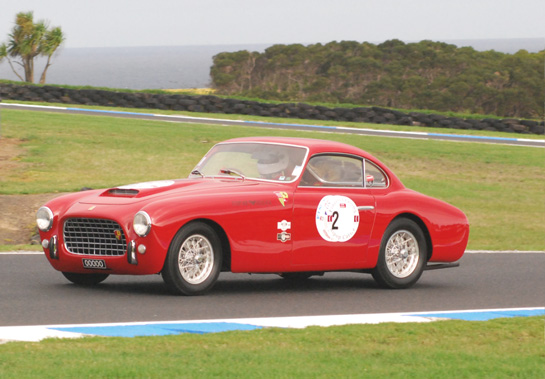
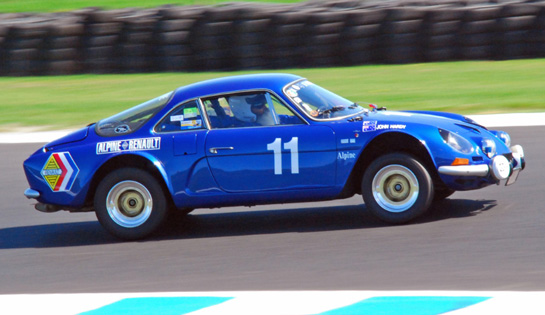
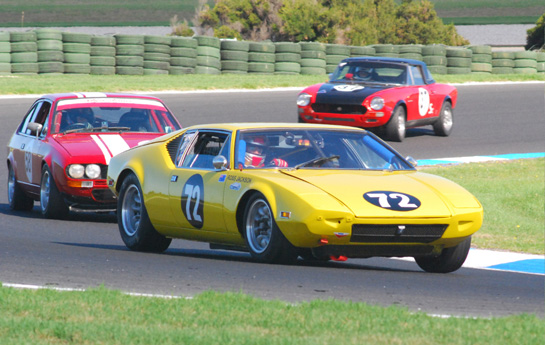
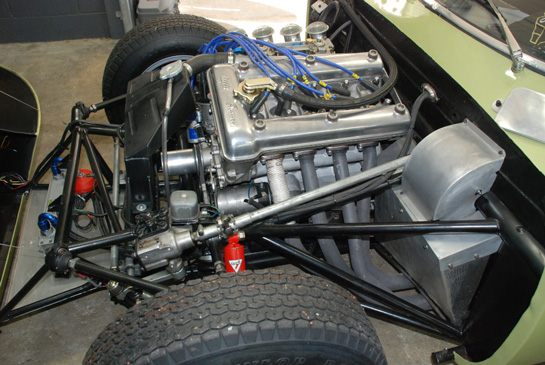
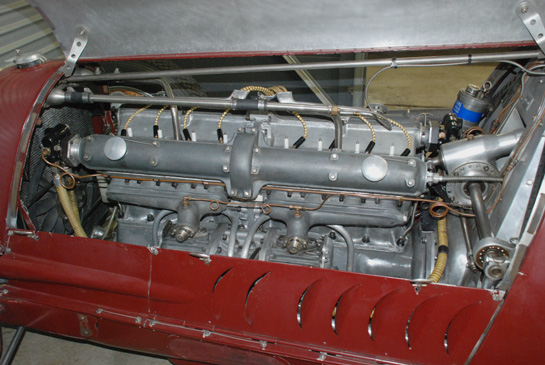
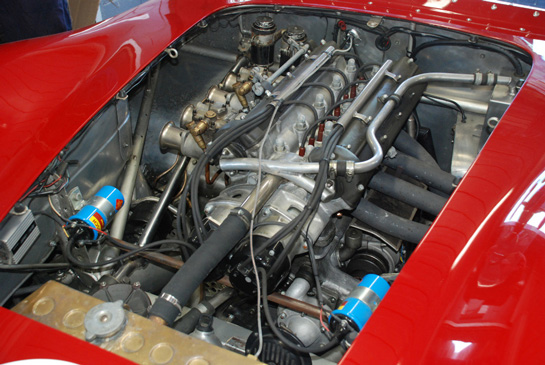
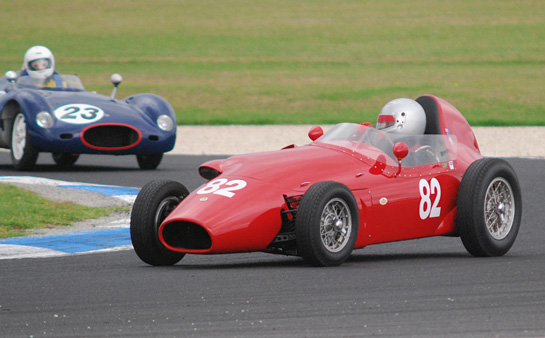
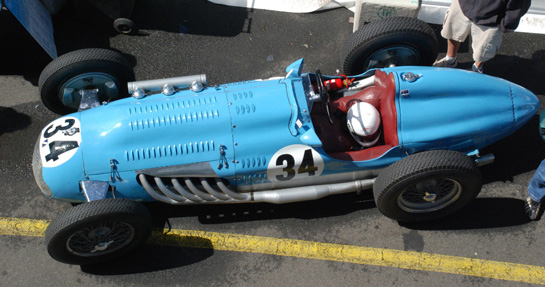
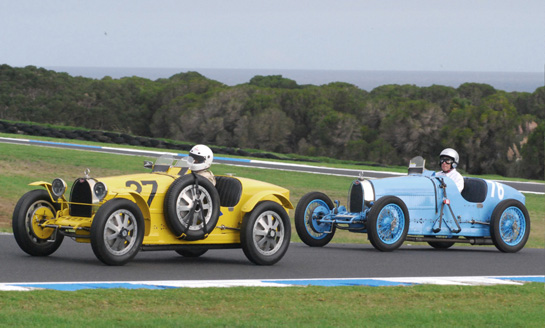
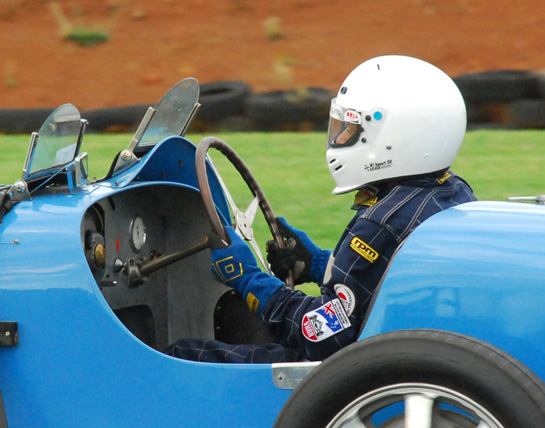
I was there on the Sunday and it was truly awesome. This event is amazing, with unrivalled access tot he cars and their teams. Great fun.
One of the joys of viewing old racing cars in period is that you could enjoy their lines, uncluttered by sponsor or other stickers. Thankfully most of the cars in the piece were not afflicted with this problem. The 158 Alfa is unfortunately totally overdone in this regard. Where’s the concern for historic accuracy.
Very beautiful event and your photos. Congratulations.
A great report Pete,and wonderful photos. As the chief commentator at Phillip Island I have probably the best seat in the house, and I know from the reports like yours it gives the hard working VHRR race committee a great degree of satisfaction,so thanks for spreading the word to the rest of the historic racing world,keep up the good work. Kind regards,Ron Simmonds on behalf of the VHRR.
Ron,
Thanks very much! Of course all the credit really goes to Vince Johnson, who has helped us in so many ways with so many different articles, from Clipsal reports to Phillip Island Classic, to the three part Talbot Grand Prix article with Stuart Anderson, to doing the photography for the down under Delage that inspired famous author/biographer Miranda Seymour to write and article for VeloceToday. For those who want to see more of Vince’s work, just type in his name in the ‘find’ box.
Pete Vack, Editor
Congratulations to the author , the event was brilliant and as a competitor [ in Alfa Romeo of course ! ] it was even more special. As a correction to Michael Lynch,s observation,s , the car is a 159 ex. Fangio / Farina and was brought out here by the organising committee of the Alfa Romeo celebrations , with one member in particular who cemented the deal with the museum.To fund the car coming here some sponsors assisted , and as a result the car had 2 stickers of a as modest and as tasteful a size as possible , yes we would have loved not to have them….but without them the car would not be have been here.I think the greater good prevailed,the car was also a sensation at the Australian Grand prix where it could stretch its legs.
The Alfa celebrations included also , a 2 day rally, a display of Alfa,s not seen in this country before in Lygon St , Carlton [ ” little Italy ” ] and a dinner to cap the celebrations off…a fantastic 3 weeks.